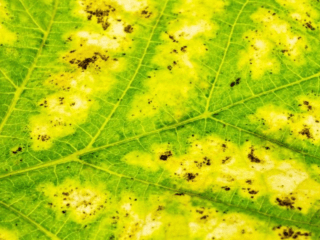Content
Grafting grapes in the fall requires especially careful planning, since you need to be in time before the first frost. Otherwise, the procedure is carried out exactly the same as in the spring. It is necessary to prepare several cuttings and make a split on the trunk, and then insert them there and coat the trunk on all sides with clay for insulation.
Why graft grapes?
Grapes can be propagated in different ways, mainly vegetatively, for example, by cuttings or layering. Along with them, the grafting method is also used. This is not a very complicated method that gardeners and farmers use for the following purposes:
- Obtaining different varieties on one bush.
- Growing less winter-hardy specimens on more resistant rootstocks.
- Obtaining fruits that differ in shape, color and taste.
- Protecting grapes from a very dangerous pest - phylloxera (a small insect that resembles an aphid).
- Saving space on the site.
- Grape grafting is carried out in the fall to test the variety, which allows you to understand whether it is worth breeding in the future;
- Another goal is to replace one with another without planting the seedling itself.
Thus, grafting is often done as an experiment. Using this procedure, you can understand which variety will take root better, what its taste is, and whether it is worth growing this or that variety.
Pros and cons of autumn vaccination
Propagation of grapes in the fall by grafting is not as common as in the spring (this is the main period). Although this procedure has several advantages:
- After grafting in the fall, the grapes will grow earlier the next season and will bear fruit earlier. It will give the first harvest in the summer, thanks to which you can evaluate the taste, appearance and other parameters.
- Autumn grafting not only helps to increase yield, but also affects the quality of berries.
- The procedure saves valuable varieties from genetic degeneration.
- Promotes healthy grapes and prevents phylloxera damage (this is especially important for the southern regions of Russia).
- Grafting in the fall increases the crop's resistance to drought, and in the northern regions, to high humidity and other unfavorable conditions.
Autumn propagation also has some disadvantages:
- It is important to accurately determine the timing and make it before the first frost, because otherwise the scion may not take root, and all efforts will be in vain.
- In autumn, plants are more weakened than in spring, which also reduces the chances of survival.
- If there are too many vaccinations, fusion may not occur.

Lignified cuttings are chosen for grafting in the fall.
Timing of grape grafting in autumn
When planning the autumn grafting of grapes, it is important to correctly determine the timing. The work is planned for warm days, when the daytime temperature remains consistently above +15 degrees. Different regions have their own deadlines, for example:
- in the middle zone and Volga region - end of September;
- in the Black Earth Region - the first half of October;
- in the south - the second ten days of October.
However, weather conditions can change, so it is worth focusing on a specific forecast. Also, when planning, take into account the following features of autumn reproduction:
- Before the procedure, the crop must be completely removed.
- A significant part of the foliage should already turn yellow.
- During work and in the coming days, the weather should remain dry and sunny.
If this does not happen, this means that the grapes have not yet had time to ripen, and the chances of survival are lower.
Preparation of scion and rootstock
Propagation material must undergo certain preparation. If we talk about the rootstock (the basis on which the cutting is grafted), then when selecting it, several indicators are taken into account:
- The bush is healthy, without damage, diseased or dry branches.
- The bark is dry and hard, whole.
- The vine is mature, the color of the bark is yellow-brown.
- In this case, the harvest must be obtained at least once, i.e. the vine must be fruitful.
- A variety with vigorous growth and good yield.
- Resistant to frost, diseases and pests.
- The stem is well developed, without damage.
- It is correct to graft grapes on a 3-year-old young bush in the fall. It can be 4-5 years old, but the plant must be healthy.
As for the scion (cuttings that are grafted onto the base), there are also several requirements for it:
- It should be healthy, not dry and without damage.
- Node with lignification, well developed. If you take green cuttings, they may freeze in winter and not grow together.
- Parameters: diameter of at least 8 mm, length 9-12 cm.
After cutting the cuttings, they need to be prepared. To do this, proceed as follows:
- Disinfect in copper sulfate (1% solution). You just need to hold it for a few minutes.
- Then dry thoroughly.
- They start grafting.
It also happens that the autumn breeding period has already passed. Then you have to put the cuttings into storage. They are placed in a damp cloth and wrapped in a thick plastic bag. You need to store it in a cool, dark place - a cellar or refrigerator (bottom shelf with vegetables) is suitable. The optimal temperature range is from -2 to +2 degrees.

If it was not possible to vaccinate in the fall, the planting material can be stored in the refrigerator until next spring.
You also need to prepare the rootstock. For several weeks it is fed with superphosphate and potassium sulfate. To ensure that fertilizers are absorbed faster, they are applied foliar. Some gardeners also recommend lubricating the branches where the cut will be made with honey of any kind.
7-10 days before reproduction, young shoots are removed. It is necessary to completely remove foliage, shoots, and mustaches. They are removed both from the lower part of the rootstock and above the future grafting. They do this so that the plant directs the bulk of its nutrients and water to the new cutting. Also, a few days before the procedure, the bush is thoroughly watered with settled water.
Methods of autumn grafting of grapes for the winter
There are two main methods of grafting in the fall. You can attach the scion to a standard or directly to the root. The sequence of actions in both cases is described below.
Grafting grapes into a standard in autumn
To make an autumn grafting of grapes into a bush standard, it is recommended to follow these instructions:
- Dig up, exposing the trunk if necessary.
- Clean the surface with a knife from old, decomposed bark.
- Mark a large diagonal on the rootstock and drive the hatchet in with a hammer.
- Make a split with a screwdriver. It gives a small pocket, which is why this autumn grafting of grapes is called a sleeve.
- Cut the cuttings for grafting below the eye, retreating 4 cm.
- On the same side, make a cut on the cone for grafting.
- Repeat the same on the other side - you will get a cut like this.
- Insert the grafting cutting into the split.
- Make the second grafting of grapes in the same way.
- Dampen toilet paper and seal the split.
- Place polyethylene between the cuttings.
- Wrap with a piece of natural fabric. If you do this in the fall, then by spring it will decompose in the soil.
- Place clay on top for insulation.
- Add water.
How to graft grapes into the roots in the fall
Also in the fall, grapes are grafted into the roots. It is carried out in cases where the underground part of the rootstock is short, so it will not be possible to obtain sufficiently high-quality and reliable splitting. The main root of the skeletal type is taken as the basis. It is separated from the trunk and fixed to a low peg. Next, the vaccination is done in exactly the same way, i.e. into cleft

To correctly perform the procedure at the root, you need to know the main steps
Caring for grapes after grafting
After grafting in the fall, it is important to provide good care - then the cuttings will take root faster. Experienced gardeners recommend following these tips:
- A dense cone of liquid clay should be formed around the grafting site, which will create good thermal insulation.
- The bush is watered generously with water at room temperature. This will allow the graft to take root in the fall and help the root system survive the winter normally.
- It is not necessary to fertilize in the autumn, but the following spring a complex mineral fertilizer or mullein infusion diluted with water 10 times is applied.
- If the temperature in autumn drops below 15 degrees, a small greenhouse is created on top of the grafting - a bottle or plastic cup. You can also cover it with spunbond.
Mistakes of novice gardeners
If you vaccinate in the fall, you should consider several features. Beginning gardeners may make several mistakes due to which the scion will not take root. To avoid this, it is recommended to follow these rules:
- Do not think that the larger the grafting cuttings, the better. In fact, the length should be no more than 12 cm. The smaller the distance between the eyes (internodes), the better.
- For vaccination in the fall, it is important to carefully choose the timing. In order for the cuttings to take root, it is necessary to begin work no later than two weeks before the first frost on the soil.
- You should not only form a clay cone around the grafting site, but also add soil 8-10 cm high. In this case, there is no need to fill the upper edges. This common mistake can lead to stunted growth.
- It is better to prepare cuttings yourself or purchase them from a nursery. It is not recommended to buy them from unverified sellers.
- Grafting unfamiliar varieties can only be done as an experiment (select 1-2 bushes). The main part of the vineyard should be formed using generally accepted, proven methods.
Conclusion
Grafting grapes in the fall can be done quite simply. This is an effective propagation method that allows you to breed the desired varieties in different climatic conditions. If you properly prepare the cuttings and prepare the rootstock, the survival rate reaches 100%.






















